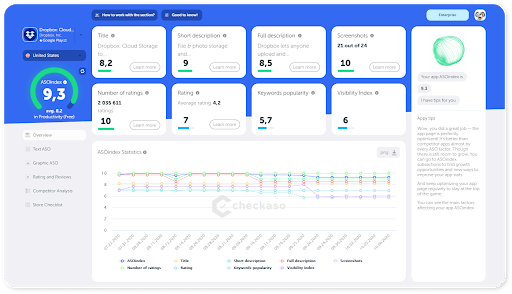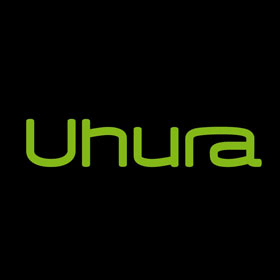
How to Promote an App with a Minimum Budget?
There are many different ways to promote an app. The article briefly explains the ways and best practices.
Content marketing can work wonders, but the result isn’t immediate as you may start to track it at least six months later.
The sooner you start blogging, the better. Even before the release, you should have a website with a news section, links to social media, and a media kit.
After the release, what’s left is to add links to app stores on your website. Try different platforms to promote an app: over time, they’ll become a powerful traffic source.
What should you pack those with? The development process is the most obvious source of content at the beginning of your journey.
Feel free to show ‘behind the scenes’ as your team that shares the workflow may inspire trust among customers and provide a sense of brand identity. If you don’t have the ability to make a lot of content, consider how to adjust it for different platforms. For example, just like Kitchen Stories do it on Youtube, Facebook, and Instagram.
- Don’t just focus only on the product but build a reputation. For example, Flo publishes educational videos on its Youtube channel.
- Engage users. Braindom’s puzzle Instagram is a good example. Users frequently solve riddles and discuss the correct answers.
- Use UGC (User Generated Content). The Braindom attracts users to create content in a simple way too – they make a logo contest. Another example is iNaturalist, which tweets users’ observations of the day.
- Explore what content other app developers are making. What formats could you borrow? Study your competitors to understand how you can stand out.

Improve your SEO
Since you are placing content online, you need to make sure that people can find you. It’s all about SEO. If you don’t know anything about this, take a look at SEO basics first. Here are the minimum details required for internal website optimization:
- Remove automatically created page duplicates.
- Arrange meta tags, heading tags, and alt-captions for images right.
- Make a sitemap.
- Master microformats.
- Make sure your website is fast.
Once you’re done with internal optimization, proceed to the external one – get as many links to your website from other websites as possible. It’s about PR – you can find the details below.
Compile a media kit
Your website should have a capacious media kit that makes it easy to understand what your app is about. Think of it as a CV for your brainchild.
Briefly describe your app and its key features, post logos, icons, and screenshots in an easy-to-download form, provide links to social media, a promo video and main contacts.
Choose media for your target audience
With a media kit in hand, it’s easier to communicate with the media. Don’t limit yourself with mobile industry media – look for media suitable for your target audience. Have you made a handy pedometer? You need a hit on a sports magazine selection or a review by a fitness blogger to promote your app.
Don’t neglect podcasts as analysis shows that podcast ads are getting more and more effective. If you don’t have a budget for promotion at all, you can get into the podcast as a speaker. You will need some stories and expertise. At the same time, many small but promising channels appear every day.
At the initial stage, their advertising will be affordable. Moreover, such podcasts are a long-term source of traffic. New listeners will return to past recordings and follow the links (the main thing is to agree on a link in the description before you get into it).
Word of mouth and viral content
Users should be able to share your app with their friends from within. The more channels you offer, the better: social media, all kinds of instant messengers, and email.
Choose the right time to ask your users if they’d like to share to promote your app. It should be not too early for the users to appreciate the merits of the app and not too late so that they do not lose interest. Most importantly, your call to action shouldn’t get in the way of operation.
The Nike Run Club app is a good example. It allows you not only to share your routes on social media, but also to customize your future post. Another example is the Calm meditation app.
After the session, you are offered a quote of the day that you can share with your friends. Users are sharing more meaningful content that reflects their values than just praise. Complimentary reviews can be rewarded with a discount, access to an additional feature, or in some other way.
And a little about getting viral. People are ready to actively share the content that evokes strong positive emotions (funny, entertaining, inspiring). Feel free to experiment and invent various formats. Maybe your Instagram mask will go viral?

Look for collaborations
A small budget is a reason to arrange all sorts of collaborations to exchange an audience: from guest posts, joint broadcasts and webinars to going offline.
For example, App Clips do not require installation and can be accessed, for example, with a QR code. This is a good reason to partner with a local bar or cafe. Think about how else you can go offline. Where are the people who need you?
You can search for an audience of a meditation app, for example, at book club meetings, but it would be better if you did it in a noisy dining room of a business center.
Start working on ASO (App Store Optimization)
Perhaps ASO is the most affordable way to promote. It’s just like SEO in the store world. ASO will allow users to find you among millions of other apps. Optimization is needed to become more visible and convert views to installs. Pay attention to the text and visual elements.
Checkaso has guidelines on how to improve text ASO and graphic ASO. You can start by finding out your ASOindex, an indicator of the level of your app optimization. This requires a zero budget.

Consider getting featured
Once you’ve optimized your app for stores, consider getting featured: try to get into the editorials of the App Store and Google Play. If you have a quality app, then this is not difficult. The main thing is to follow the store rules and make editors like your product.
Getting featured seems to be the cherished dream of every developer as you appear on the store’s home page completely free of charge. But getting featured has a flip side.
A sharp surge in attention to your app may highlight all the bugs and shortcomings, which can result in a sharp decline, poor rating, and users leaving you. So, first of all, you need to check for the hundredth time if you are technically ready.
Test paid ads for your app
Many developers are afraid of paid advertising, not knowing where to start. It’s annoying when you spend money but don’t get the results you want. This is especially bad when you’re short of budget. Below are three basic tips for beginners to promote an app.
- Set aside a minimum budget to test all channels. Allocate $ 100-150 per channel and see which one brings the most conversion during the week. That is, installs, sign-ups or purchases – depending on what you need.
What channels to try? Facebook and Instagram have a single advertising account, where you can set up a simple test campaign in half a day. It’s very easy to set up a campaign on Google Play and App Store as any app developer can handle it.
Google Ads is a little more complicated tool to set up, but on average it tends to be more affordable than other platforms. Nevertheless, the price is highly dependent on the quality of settings, creatives, and more.
- Implement a tracking and attribution tool. This must be done before launching, otherwise you will not understand which channel brings conversion and how much. Popular analysis tools include Appsflyer, Adjust, Kochava and Branch.
- Calculate everything and rely on your media plan. The analysis will show how much a single new user will cost you. Based on this data, you can build a media plan with clear costs and stick to it.
Look for new ideas
Marketing requires creativity. By the way, the smaller the budget, the more creative you are. Where to get new ideas to promote an app?
Good artists copy, great artists steal. Look around: what are your competitors and other developers doing? What’s new in the mobile world and how can you use it for promotion? The themed digests like those below may help you keep a finger on the pulse:
- This Week in Apps on TechCrunch
- Checkaso MonthlyDigests
- News on Mobile Marketer
- ASO Monthly by Phiture
A checklist for budget app marketing
- Create a website and social media accounts before release.
- Do content marketing, try different platforms, engage users, and use UGC.
- Conduct internal website SEO.
- Place a media kit on your website.
- Work on media reviews.
- Try different collaborations (both online and offline).
- Remind the users on time to share your app with friends.
- Work on ASO frequently.
- Prepare and apply for getting featured.
- Test ad platforms with minimum budget and create a media plan.

























